Nukeproof has been a mainstream brand on the downhill scene since Sam Hill joined its Chain Reaction Team in 2013. Since then, the brand has developed a host of downhill bikes and the Dissent Carbon 297 is the latest iteration.
Designed to tame the wildest downhill courses and fight for podiums at every level, the Dissent Carbon 297 features plenty of frame and suspension adjustability to optimise rider fit and tweak rear-end progression.
The new carbon frame has enabled Nukeproof's engineers to reduce weight while meeting their strength and stiffness goals. There’s also refined kinematics from the brand's Fallout linkage, which pumps out 200mm of travel.
I tested the bike in the French Alps to see just how capable this latest version is. The Nukeproof is certainly a speed machine that thrives when being pushed hard.
It prefers an all-guns-blazing ride rather than a more cautious approach. It will be appreciated by rippers with only one speed – full gas.
Nukeproof Dissent Carbon 297 RS frame and suspension
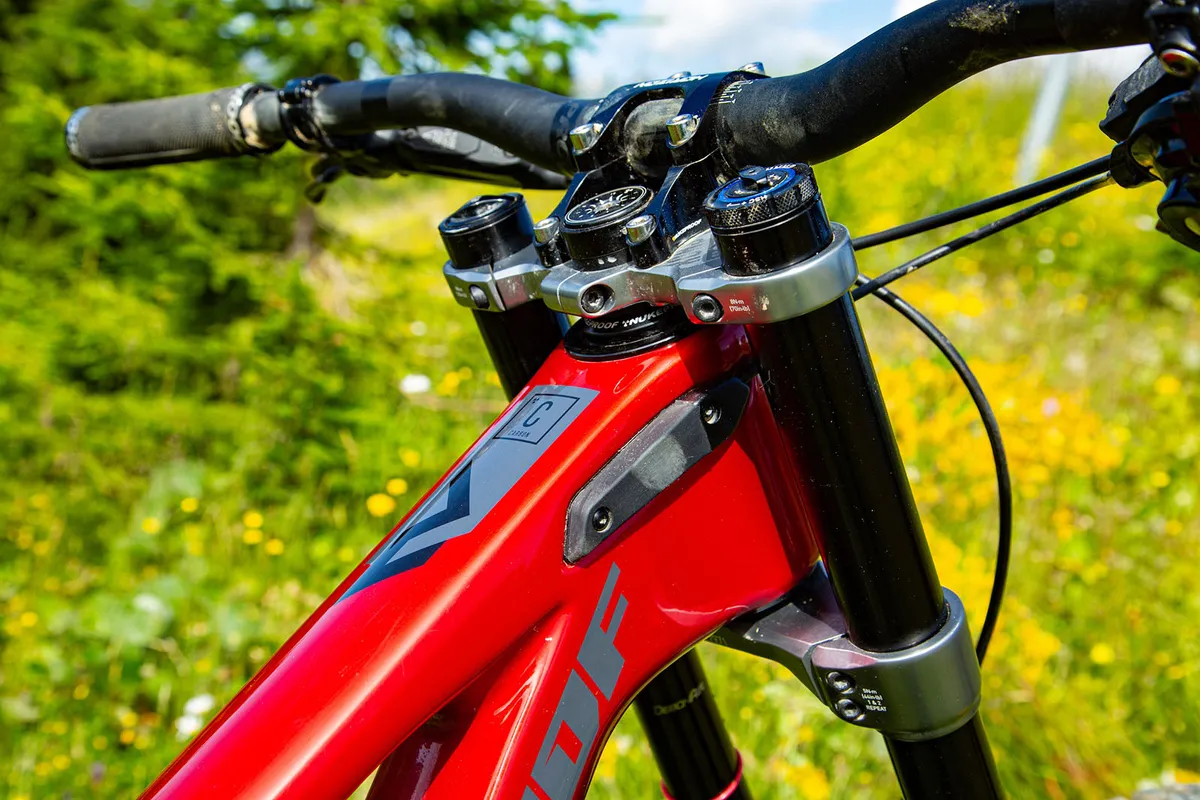
The carbon frame is built from a blend of Unidirectional T700/800 fibres, which enabled Nukeproof to form the complex shapes in the new frame. The brand says it has increased strength, stiffness and compliance, its primary goal with the frame.
Nukeproof also claims it has saved weight, although this was a bonus rather than a specific goal.
The frame gets plenty of protection to help reduce potential impact damage. There’s hefty down tube protection, plenty of chain slap protection and integrated bump stops. Nukeproof has also installed clear film in key areas to reduce scuffs and marks.

There's clearance for a 2.5in tyre, the use of Enduro bearings and standards such as a threaded 83mm bottom bracket and ISCG05.
As is becoming more common on downhill bikes, there is plenty of adjustability built into the Dissent Carbon 279.
A flip chip at the rear stay connection to the rocker links enables the frame to take a 27.5in wheel, as stock on this setup, or you can change it to run a dual 29in-wheel configuration, while keeping geometry the same.
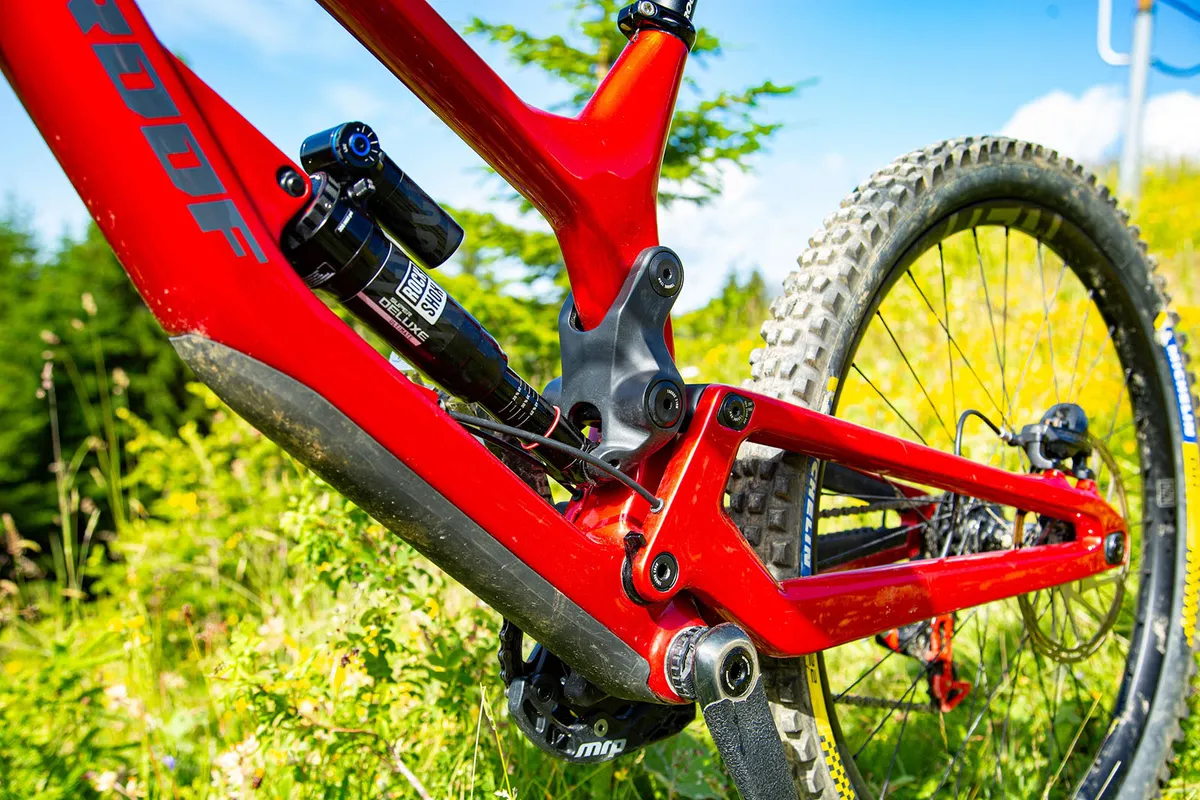
The Dissent gives riders the choice between three progression leverage curves. Setting 1 has 21 per cent progression, setting 2 is 25 per cent, and setting 3 is 28 per cent progressive.
Nukeproof states all settings start with a high leverate rate to boost small-bump sensitivity. Setting 1 has the firmest initial stroke and setting 3 the softest.
All three curves feature a regressive ending, meaning that in the last 20 to 30mm of travel, the frame kinematics become softer to prevent a harsh ramp-up at bottom-out events. This means the frame may suit air shocks better than coil shocks.
Nukeproof Dissent Carbon 297 RS geometry
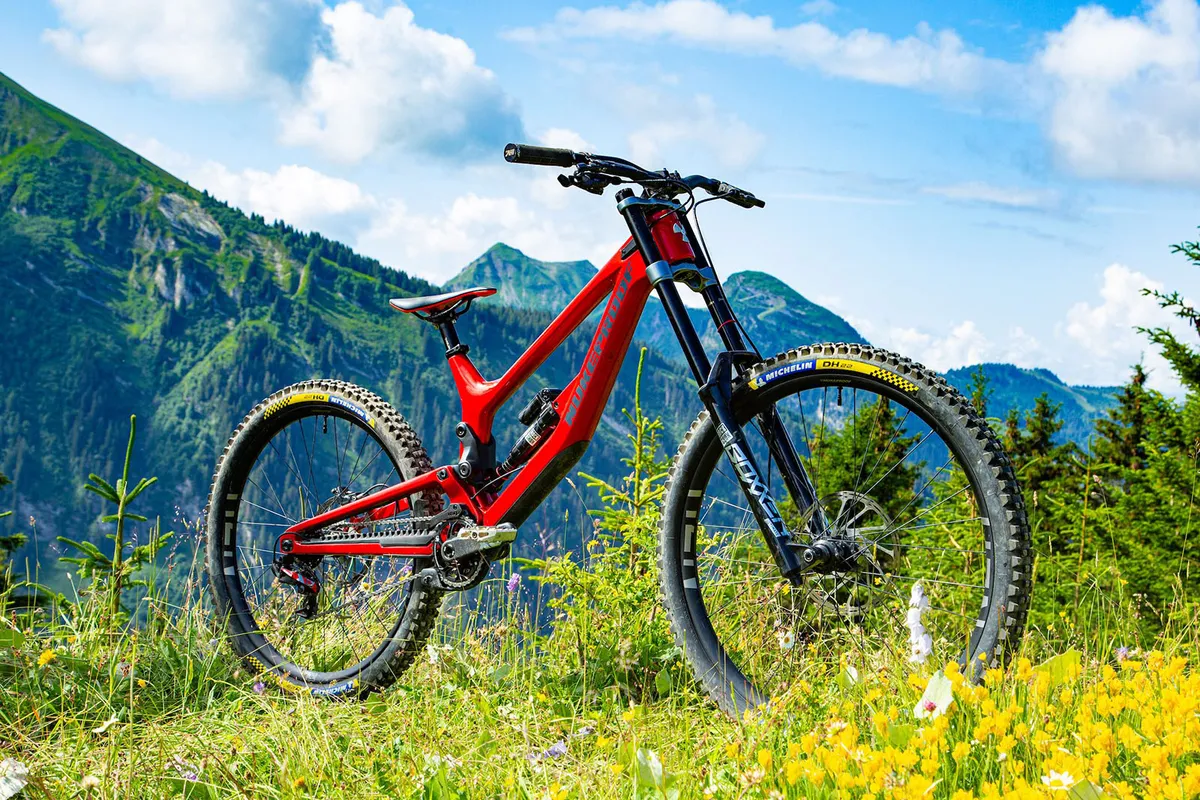
There are three sizes for the new Dissent Carbon 297, named NP1 (S/M), NP2 (M/L) and NP3 (L/XL). The headset cups can be swapped out to run either a -6mm, 0mm or +6mm setting to change the reach for your preferences.
There are also three chainstay lengths to fine-tune rear-end stability. There are -5mm, 0mm and +5mm settings.
I tested the NP2 bike with the headset and chainstay in the middle setting and the flip chip set to the 27.5in rear wheel.
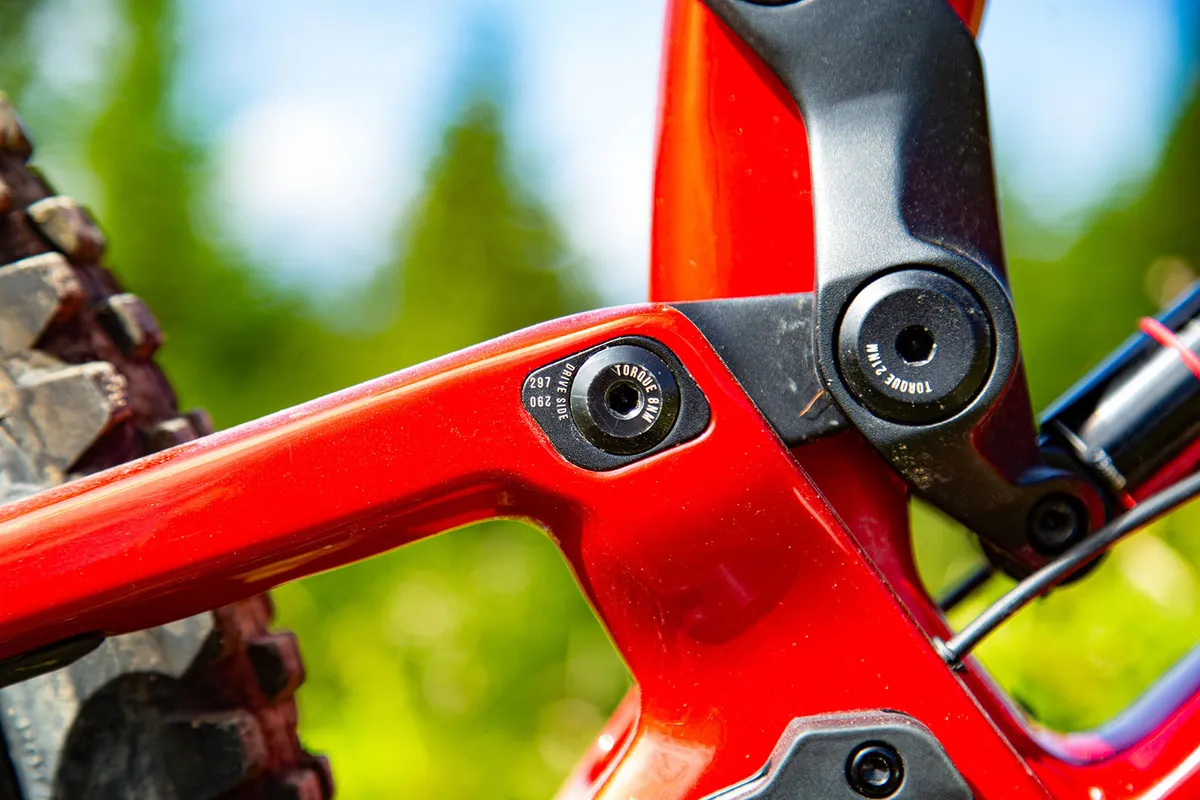
This gives a reach figure of 465mm, which is similar to other medium-sized downhill bikes. The stack is fairly low, though, for this size of downhill bike, at 627mm.
The head tube is a downhill-standard 63 degrees, which provides plenty of stability with a wheelbase of 1,273mm. The chainstays are a balanced 445mm in this mid setting. The Nukeproof has a 15mm bottom bracket drop below the front axle and 0mm below the rear.
Overall, the geometry is what you would expect for a well-balanced downhill race bike, but riders might need some stem spaces to get handlebar height to meet their needs.
| | NP1 | NP2 | NP3 |
|---|---|---|---|
| Seat angle (degrees) | 76.5 | 76.5 | 76.5 |
| Head angle (degrees) | 63 | 63 | 63 |
| Chainstay (mm) | 440 / 445 / 450 | 440 / 445 / 450 | 440 / 445 / 450 |
| Seat tube (mm) | 405 | 405 | 405 |
| Top tube (mm) | 589 / 595 / 601 | 603 / 610 / 616 | 624 / 630 / 636 |
| Head tube (mm) | 100 | 105 | 110 |
| Fork offset (mm) | 46 | 46 | 46 |
| Trail (mm) | 139.5 | 139.5 | 139.5 |
| Bottom bracket height (mm) | 360 | 360 | 360 |
| Wheelbase (mm) | 1,251 | 1,273 | 1,295 |
| Standover (mm) | 705 | 705 | 705 |
| Stack (mm) | 622 | 627 | 631 |
| Reach (mm) | 439 / 445 / 451 | 459 / 465 / 471 | 479 / 485 / 491 |
Nukeproof Dissent Carbon 297 RS specifications
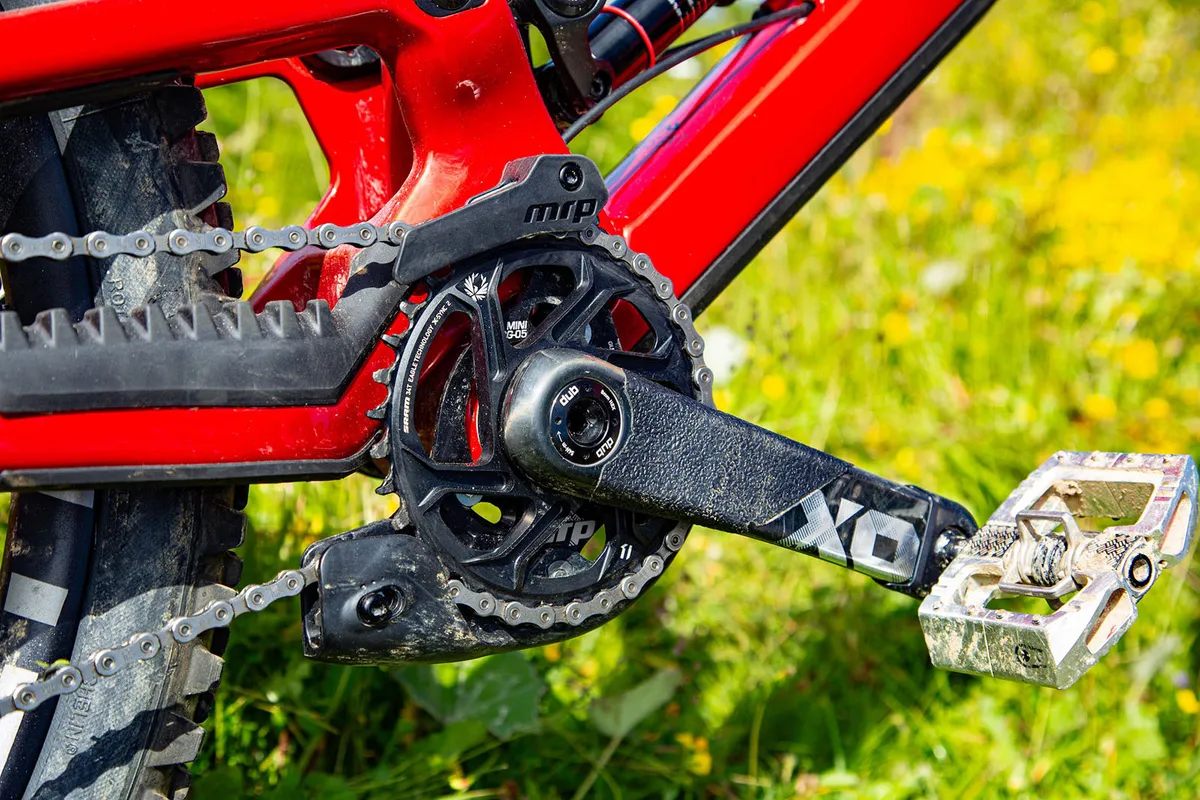
Nukeproof has managed to spec a well-equipped bike for the price. It features a 200mm-travel RockShox Ultimate Boxxer Charge 2.1 RC2 fork and RockShox Super Deluxe Ultimate shock that delivers the bike's 200mm of rear travel.
The bike uses a full complement of SRAM parts for its drivetrain and brakes, including SRAM X01 DH 7-speed gearing and SRAM X01 DH Carbon cranks.
The brakes are SRAM’s Code R, with a 220mm front rotor and 200mm at the rear.
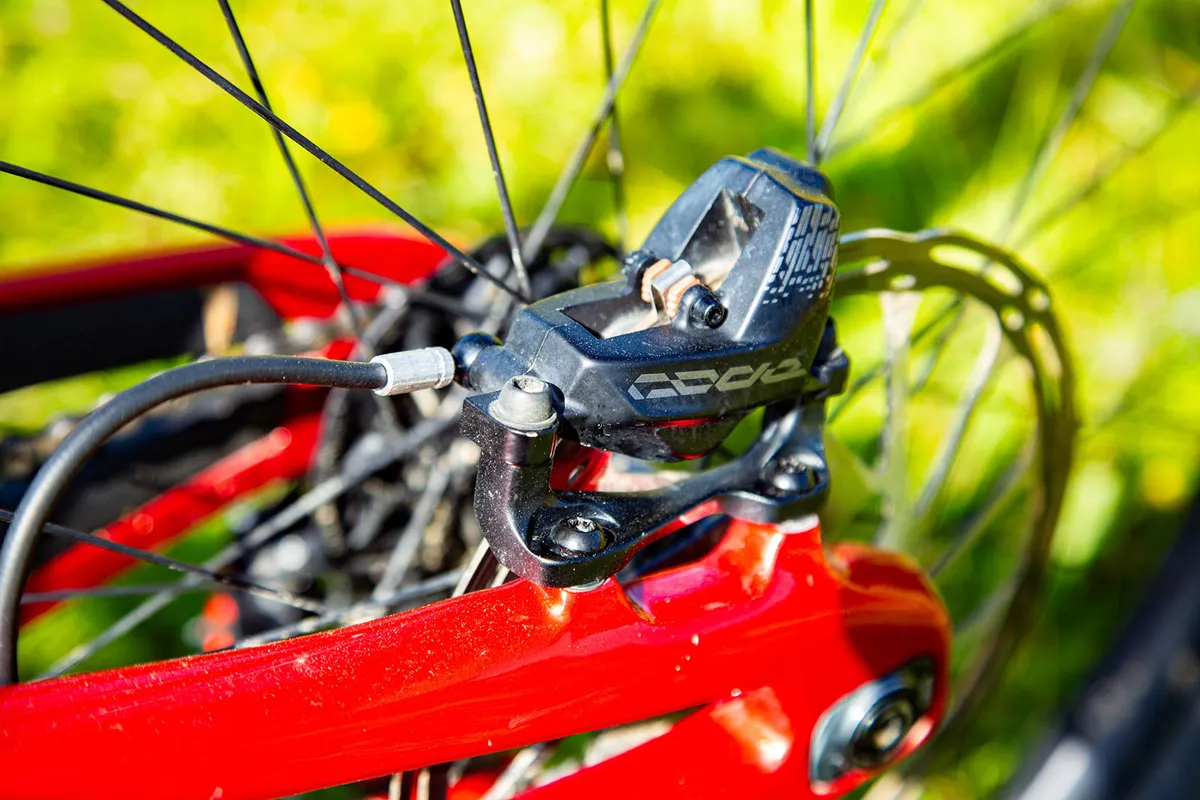
As you’d expect, there are plenty of Nukeproof parts, including the Horizon V2 wheels. These are wrapped in Michelin DH22 tyres.
The cockpit uses Nukeproof’s Horizon V2 handlebar and direct-mount stem. The saddle is a Nukeproof Vector DH Comp fitted to a Nukeproof Neutron seatpost.
Nukeproof Dissent Carbon 297 RS ride impressions
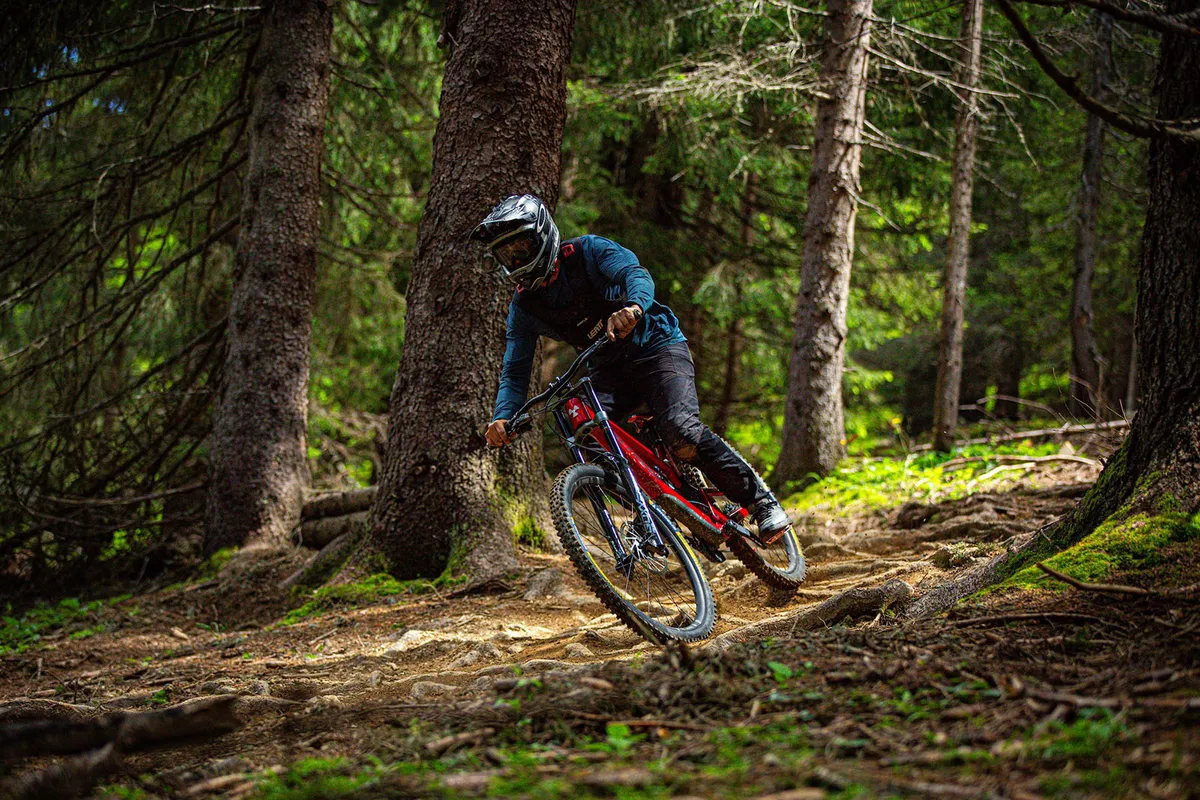
To put the Nukeproof Dissent Carbon 297 RS through its paces, I spent two weeks in the Portes du Soleil, in Morzine. Conditions varied from dry and dusty to wet slop and everything in between.
I rode a wide variety of trails, from high-speed bike-park runs to steep, slow, tech trails peppered with roots and rocks, to find out where the bike excelled and where it came unstuck.
I settled on 81psi in the Rockshox Boxxer Ultimate fork for my 75kg riding weight. This gave me 20 per cent sag.
I ran the high-speed compression damping fully open and used 14 clicks from closed out of 18 on low-speed compression. I like to run my rebound quite fast and also ended up with 14 clicks of 18 from fully closed on rebound.
For the Rockshox Super Deluxe Ultimate shock, I ran 160psi. This meant there was 30 per cent sag at the shock.
I set the compression damping to open from its five positions, and I ran the HBO (Hydraulic Bottom Out) at position three of five. For the rebound damping, I ran 9 of 11 clicks from fully closed to get the rebound speed I preferred.
I ran the bike in its mixed-wheel setup, with a 29in front wheel and 650b rear wheel. I used the 445mm chainstay position, which gave the bike more agility and an easier ride character without seriously compromising stability at my top speed.
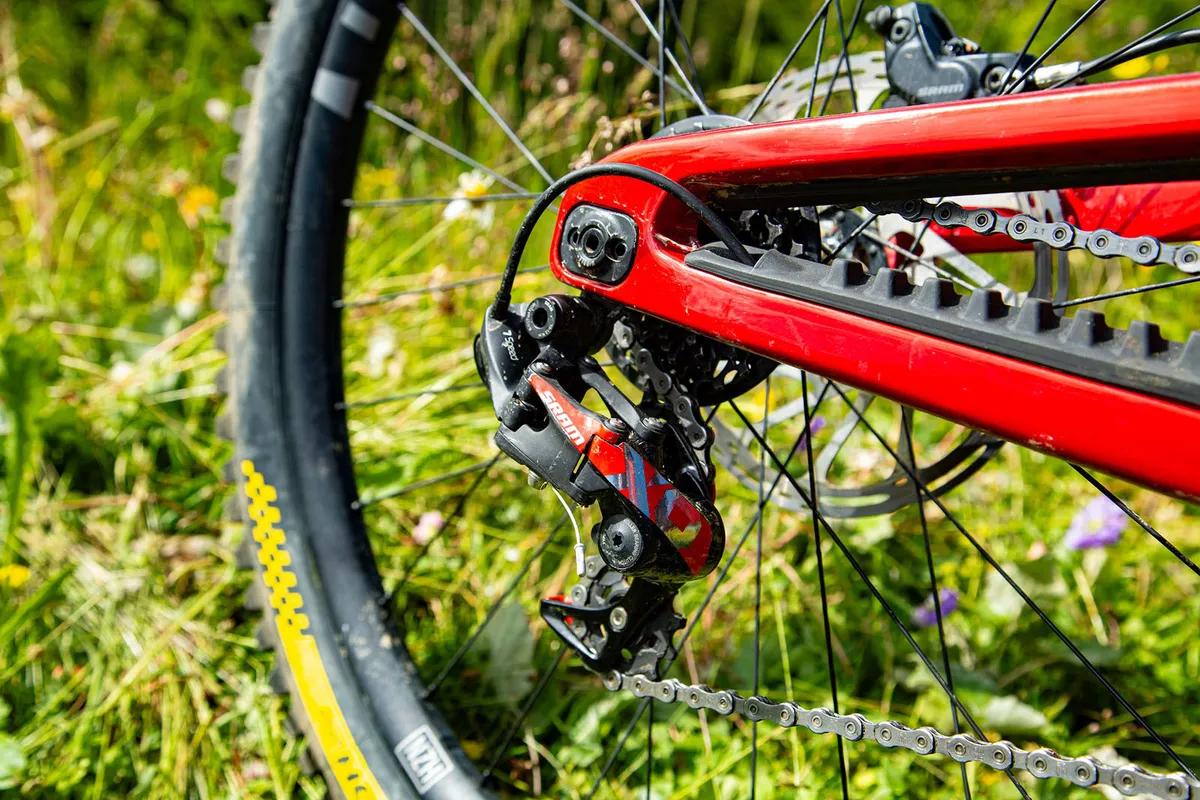
I didn’t have any issues setting up the bike, but playing with the flip chip to see how easy it was to change, I found the chip was securely stuck in the frame and needed to be firmly knocked out.
When re-tightening the pivot bolt, the Allen Key got stuck in the hardware, which seems to be made from fairly soft aluminium.
A little care is needed if working on this, but it should be a set-and-forget setting once you’ve got your rear-wheel size chosen.
Nukeproof Dissent 297 RS descending performance
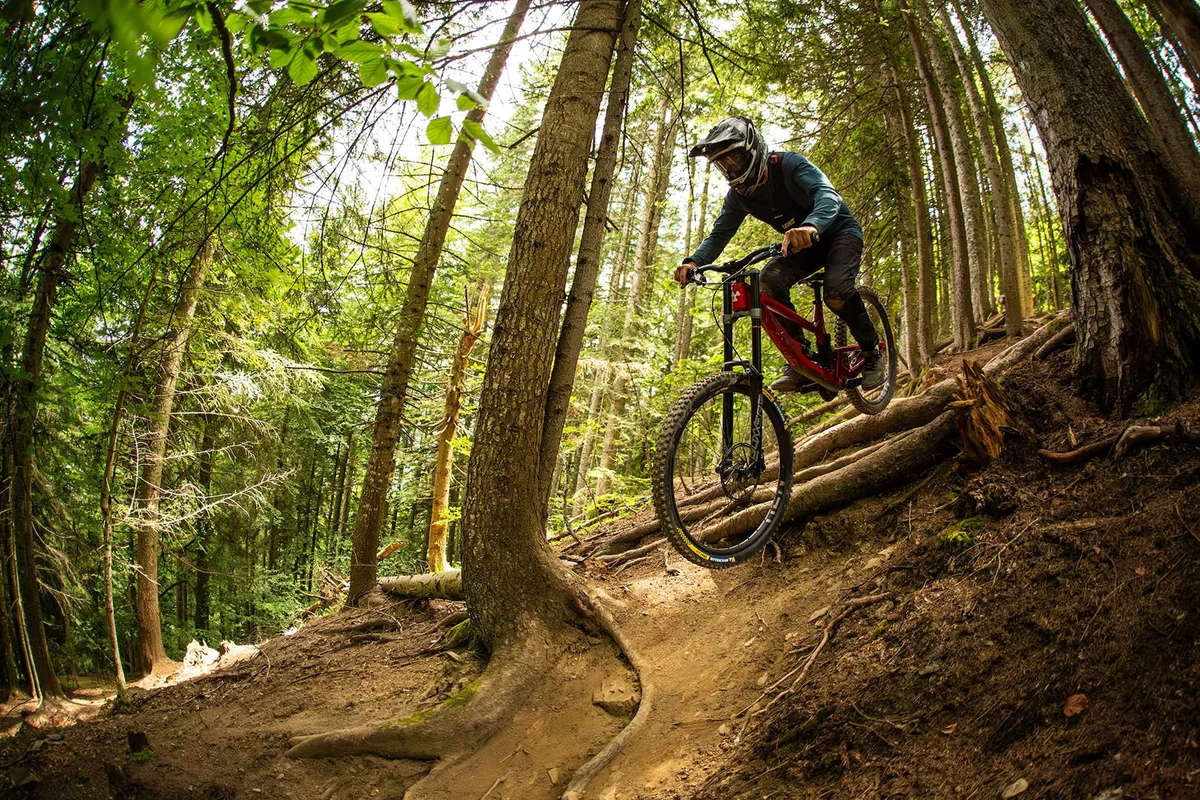
The Nukeproof is an impressive piece of kit that is more at home being ridden on the edge than piloted politely. When pushed hard, it has your back with stability and control, but its ride feel is muted and sometimes lethargic.
Because of this, I preferred the most progressive setting 3,fsticks which helped give the bike more support to maximise liveliness and make it more engaging on the trails.
The rear suspension eases into its travel smoothly and has a supple initial stroke that delivers good grip and braking traction. This helps deliver confidence when the trails are unsupported, steep or become slick.
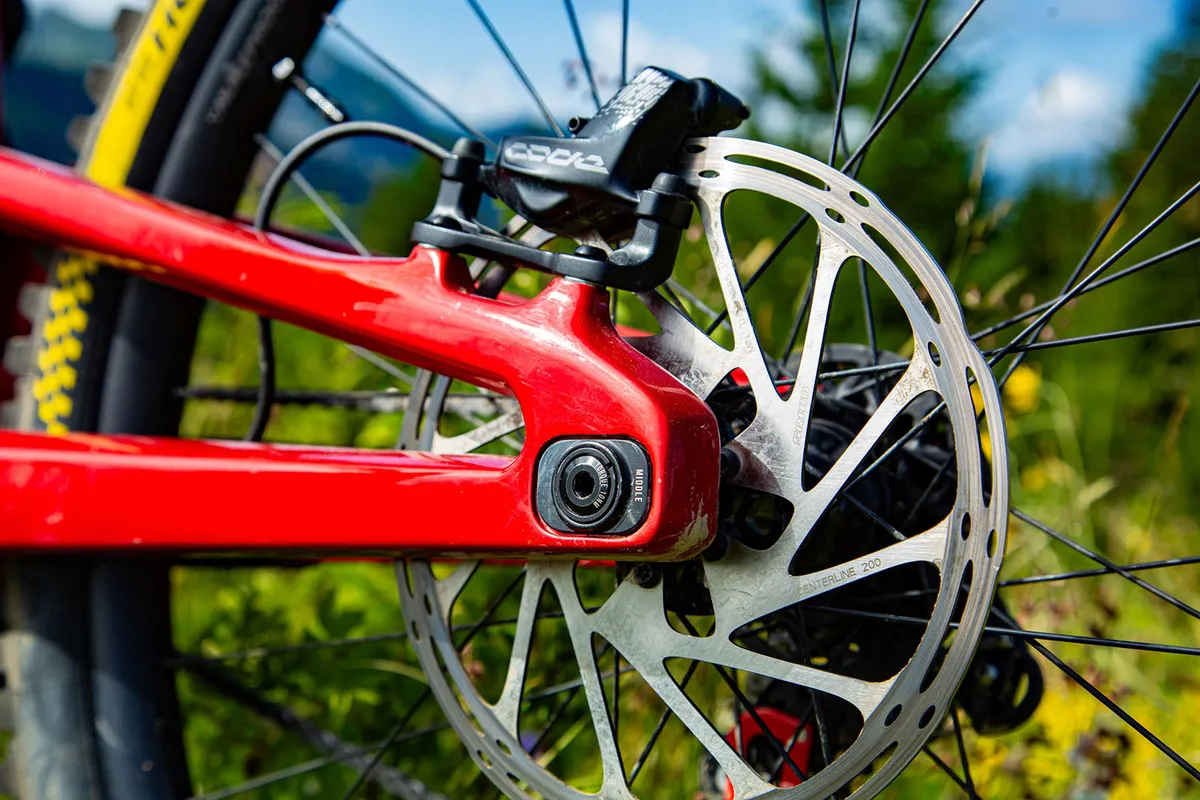
The rear wheel sticks to the ground, keeping the tyres biting into the dirt, and also irons out small trail imperfections.
The mid-stroke is plush and progression builds later in the travel. It was when riding in this portion of travel that I found speed helped the bike. Riding fast keeps the Dissent skipping across the bumps and prevents the rear suspension from squashing into its mid-stroke too deeply.
When riding at speed, this suspension trait offered good comfort and the bike took the sting out of harsh square-edge hits on various gradients, enabling me to charge with confidence through rough sections, root spreads or rock gardens.
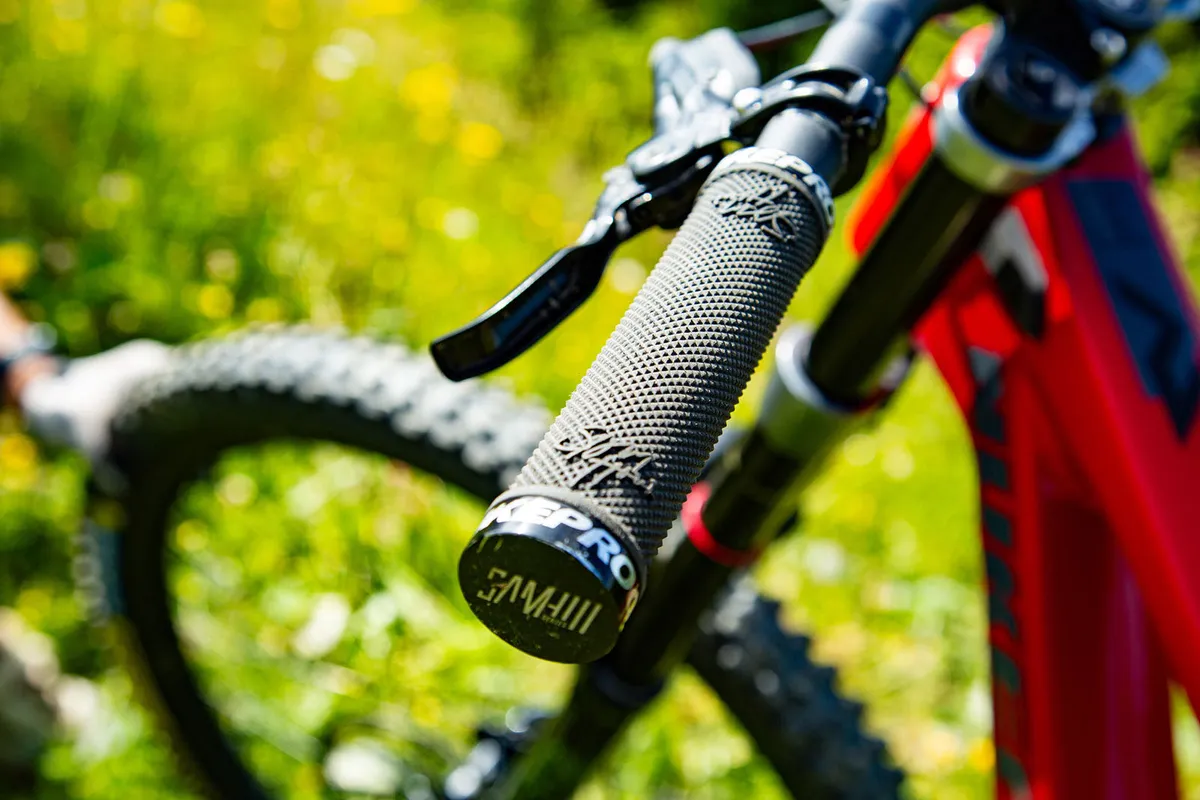
Riding too casually sees the bike wallow into its travel, which makes it feel as though it stalls in certain situations, such as successive step-sized drops or chunky root and rock-littered trails.
Progression ramps up firmly deeper in its travel, which prevents the bike from harsh bottom-outs. This isn’t to say the end-stroke progression builds sharply, but I noticed the most support deeper in the travel. This could be down to the progressive nature of the air shock this Dissent uses too.
Landing heavy drops or hitting deep compressions at speed, there was no nasty metal-on-metal clunk from the shock using full travel. This meant I could trust the Nukeproof when riding at its preferred high speeds.
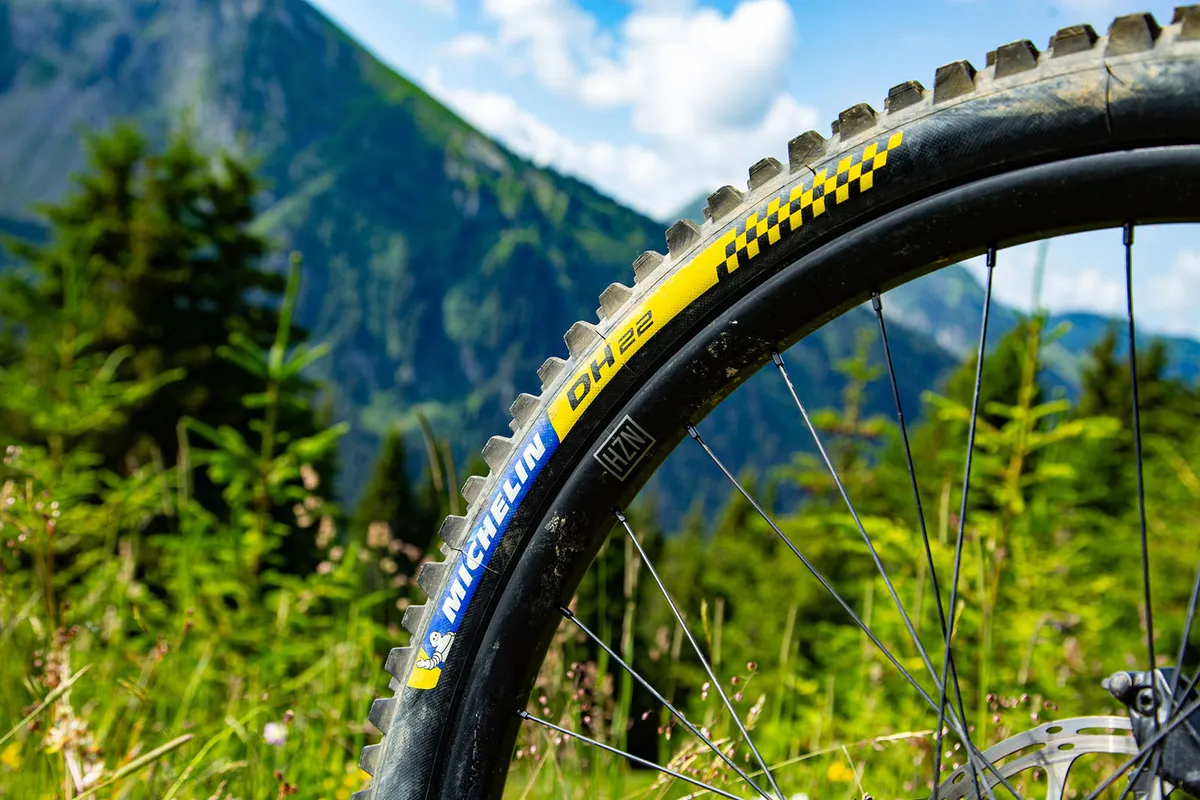
The Michelin tyres offer pros and cons. The traction is great, but not noticeably better than other downhill mountain bike tyres. However, they are very slow-rolling compared to Maxxis and Schwalbe tyres on the Giant and Propain bikes I tested alongside.
I found the SRAM Code R brakes were underpowered for prolonged steep tracks, and I needed a firmer lever pull to get the stopping power I wanted.
Perhaps a SRAM HS2 rotor upgrade or SRAM’s more expensive Code Ultimate Stealth or RSC brakes would be an improvement, thanks to their SwingLink lever design, potentially offering more power and bite.
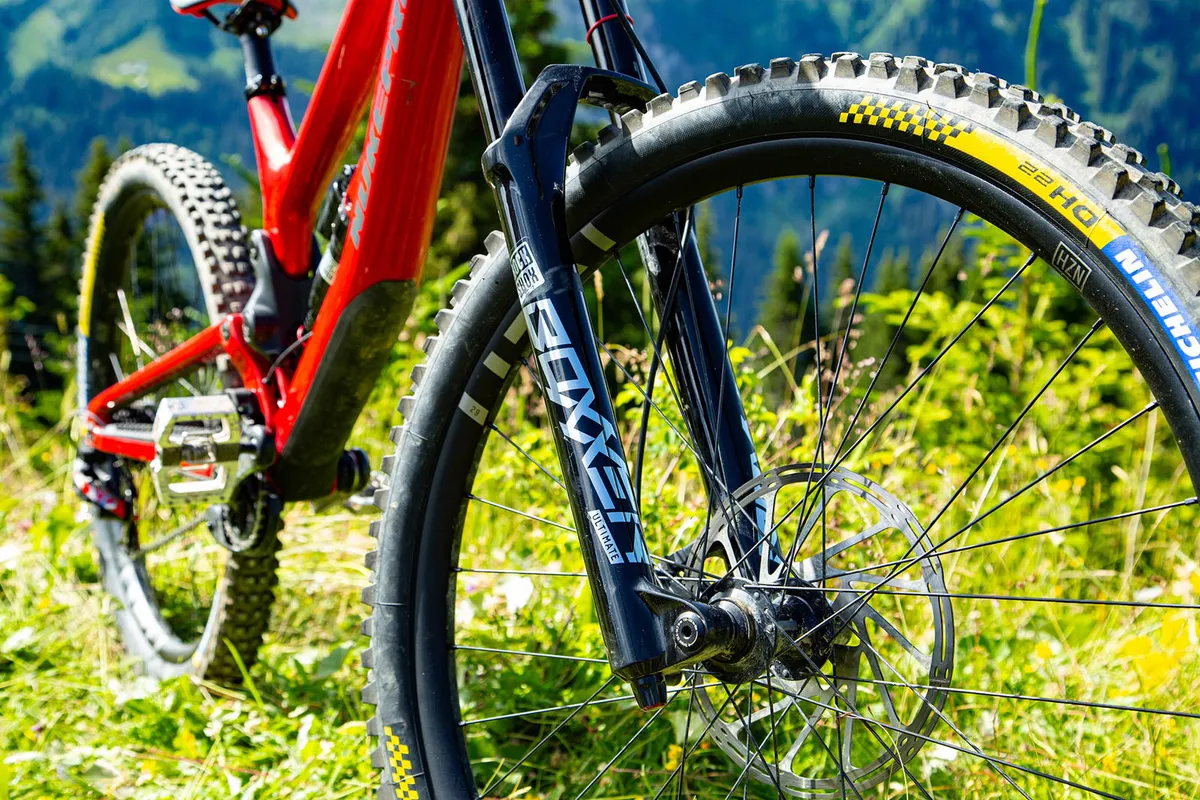
The RockShox Boxxer Ultimate Charger 2.1 fork was smooth and supportive, and helped keep the front end up. This enabled me to charge steep trails confidently without the bike feeling as though it wanted to dive forwards on steep compression or under heavy braking. The supple beginning stroke helped with comfort too.
I had plenty of space to move around the Nukeproof, and its handling is intuitive. However, sometimes it can understeer if the rear end sinks into its travel.
Its downhill bike geometry offers plenty of stability, and the even weight distribution between the wheels meant I rarely had to aggressively load one tyre or the other to find grip. Therefore, I could concentrate more on line choices than body position.
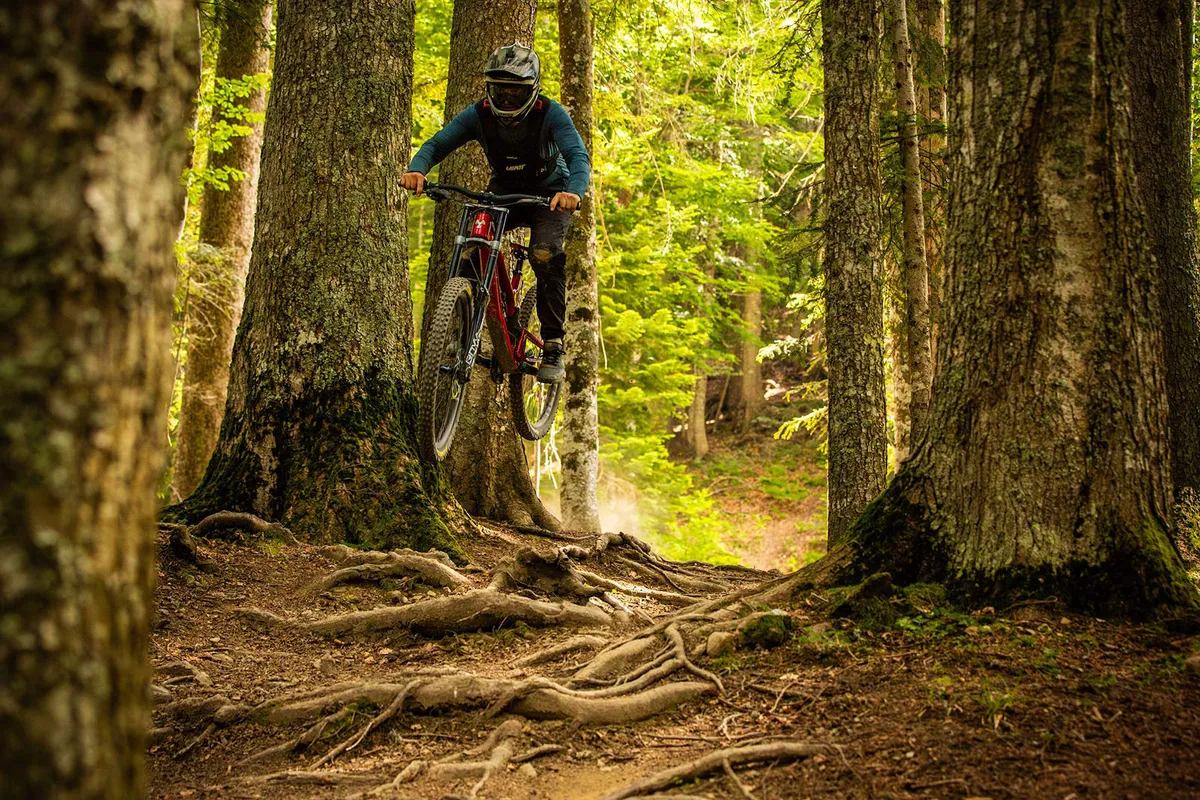
The bike's comparatively low stack height meant I was at the limit of handlebar height for comfort. Taller riders might need more stem spacers or a high-ride handlebar to get comfortable.
While the Nukeproof isn’t a chore to turn, its planted suspension doesn't give it the flickability of the Giant Glory, and while it will hold a line, it's not quite as maneuverable to place wheels on any part of the trail.
The Nukeproof seems content to ride over whatever is in front of it, rather than be delicately placed on the trail to avoid the roughest terrain.
How does the Nukeproof Dissent 297 RS compare to the Propain Rage 3 CF Mix Highend?
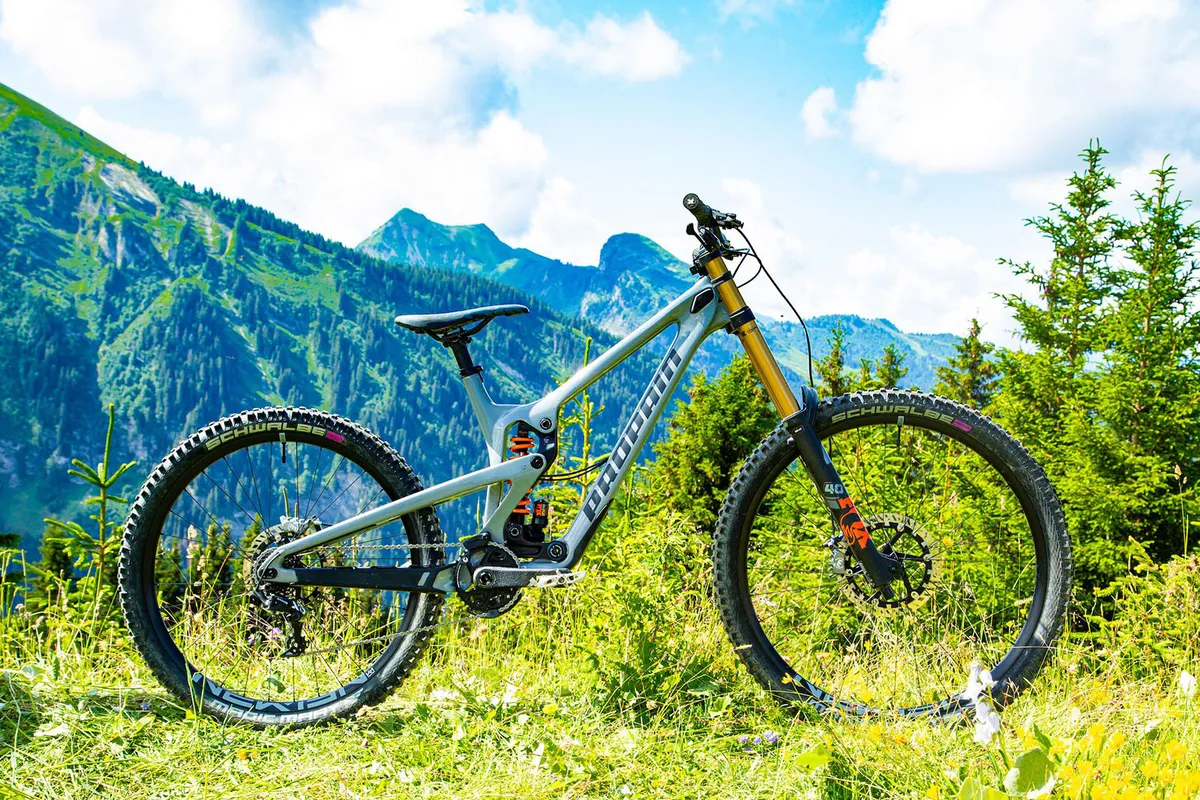
Considering these two bikes are raced on the world cup circuit, they have reasonably different ride characters. The Propain is lively, and thrives when popping around and playing on the trail. It can handle high speeds well and is plenty of fun, whatever trail you’re on.
The Nukeproof prefers to ride the ragged edge and be pushed hard. Here, it's stable and composed. If you’re interested in chilled bike park laps, the Propain would make more sense. If you just want to hit the hardest lines at full speed, the Nukeproof will have your back.
How we tested | Downhill race bikes
We took three downhill world cup race bikes out to the French Alps to give them a thorough thrashing.
This enabled us to ride suitable trails and use chairlift and gondola uplifts to get plenty of testing runs in.
We judged these bikes on their overall ride character, and how easy they were to ride at our limits. We wanted to dig into how they balance traction and support, their chassis stability at speed and how they behave under braking.
We also highlighted how they feel on the trail and who they’re most suitable for.
Bikes on test
- Nukeproof Dissent Carbon 297 RS
- Giant Glory Advanced
- Propain Rage 3 CF Mix Highend
Nukeproof Dissent 297 RS bottom line
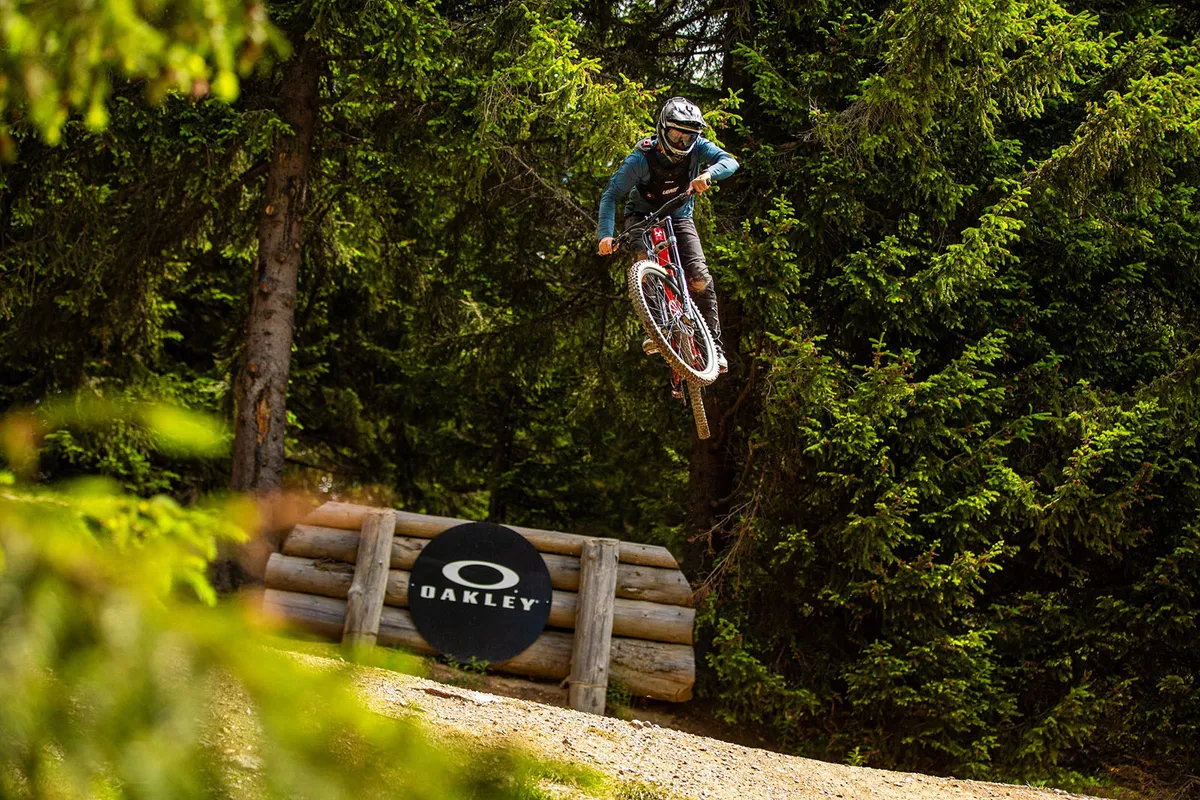
The Dissent Carbon 279 RS can certainly shift, and it's at its best when you ride with the tap wide open. This makes it more of a race bike that's not as versatile as the Giant Glory or Propain Rage.
Once you get it up to speed, though, there’s plenty of composure and grip, and it’s not fazed by whatever trail is in its way.
More mellow trails and slower speeds make it feel underwhelming, where it doesn’t have the liveliest ride feel and can become bogged down or feel sluggish.
Cool, calm and collected at speed sums up the Dissent.
Product
| Brand | Nukeproof |
| Price | £6000.00 |
| Weight | 16.59kg |
Features
| Fork | RockShox Boxxer Ultimate, Charger 2 |
| Stem | Nukeproof Horizon Direct Mount |
| Chain | SRAM PC-1110 11-speed |
| Frame | DH-specific ultra-strong monocoque UD carbon fibre, 200mm travel |
| Tyres | Michelin DH22 29x2.4in (f), Michelin DH22 27.5x2.4in (r) |
| Brakes | SRAM Code RSC, 220/200mm rotors |
| Cranks | SRAM X01 DH Carbon, 165mm |
| Saddle | Nukeproof Vector DH Comp |
| Wheels | Nukeproof Horizon V2, alloy |
| Headset | Nukeproof, ZS56/ZS56 |
| Shifter | SRAM X01 DH 7-speed |
| Cassette | SRAM GX DH 7-speed |
| Seatpost | Nukeproof Neutron |
| Grips/tape | Nukeproof Sam Hill Signature |
| Handlebar | Nukeproof Horizon V2 |
| Rear shock | RockShox Super Deluxe Ultimate Air |
| Bottom bracket | SRAM DUB 83mm |
| Available sizes | NP1(S/M), NP2(M/L), NP3(L/XL) |
| Rear derailleur | SRAM X01 DH 7-speed |
